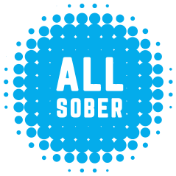What Is Post-Acute Withdrawal Syndrome (PAWS)?
Understanding what may occur after the first stages of detox

For someone in active addiction, the motivation to compulsively consume drugs or alcohol is an attempt to achieve a level of equilibrium. In an odd way, being drunk or feeling high is the driver for feeling “normal.” The absence of substances causes a sense of imbalance or being out of order even though compulsive use brings about negative physical, emotional and behavioral repercussions.
When an individual struggling with addiction wishes to seek change in addressing dependence on drugs or alcohol, their first step is to begin a detox program, one that is typically best handled through a supervised detox program at either an inpatient or outpatient medical facility. During active use, the brain adapts to accommodate changes in neurocircuitry, and these changes can result in excitability when levels of these neurotransmitters change during the absence of substances during the detox process. Acute withdrawal symptoms are experienced in the first few days of drug or alcohol abstinence and can be severe and uncomfortable, but discomfort eases and levels out over time.
Riding out the discomfort often leads the newly recovering person to form expectations that life will improve considerably once substances are removed from the body. Hope might be dampened if an individual encounters the second phase of protracted withdrawal symptoms known as post-acute withdrawal syndrome (PAWS). PAWS may last anywhere from a few weeks to two years, depending on the severity and length of substance abuse. It is not random, and occurs in 90% of recovering opioid users and 75% of recovering alcoholics; it is also experienced by people coming off benzodiazepines.
Understanding the withdrawal symptoms as a natural, if uncomfortable, and necessary part of the healing process in becoming well helps individuals manage expectations while seeking remedies to offset the physical, emotional and mental challenges.
If we think of addiction as a war against our body, mind and brain, the recovery process is like surviving after a battle with ourselves. Healing wounds takes time and understanding what is going on emotionally and physically during the healing process will help frame recovery. It is a part of the recuperation process that allows the nervous system and brain to reregulate. These are some of the symptoms that may be experienced during post-acute withdrawal:
- Cognitive problems (memory, learning, problem solving)
- Irritability or hostility
- Mood swings
- Feelings of anxiety, panic or depression
- Insomnia
- Fatigue
- Low energy
- Stress sensitivity
- Lack of interest in sex
- Chronic pain
There are ways to minimize and cope with the symptoms in order not to jeopardize recovery and avoid return to use or relapse. Consider keeping notes of symptoms to address with a therapist, psychiatrist, family members or friends in the recovery community. Because most of the post-acute withdrawal symptoms have an emotional component, PAWS can be discouraging for those attempting to gain a foothold in recovery. For this reason, it is recommended that people make use of therapeutic services to address mental health concerns and consider medication if recommended by a doctor or psychiatrist.
Tracking daily activities and moods will help people design programs to minimize the intensity of the symptoms, and journaling will help with memory problems. Forming daily routines will assist in management of expectations, boost resolve to stay the course in recovery, and go a long way in establishing normal circadian rhythms. Consider limiting caffeine and sugar intake. Interrupt circular thinking by doing different activities (exercise, talking to a friend, listening to music). Sharing openly with family and with new friends formed in recovery support groups will help a person put everything into perspective.
It is important to understand that each person has a different rate of recovery, and all symptoms and discomfort do pass as the journey to newfound freedom from drugs and alcohol takes hold.
More Help & Information
Does the 'Pink Cloud' of New Sobriety Help or Hurt? It's Complicated
The euphoria of early recovery may be fleeting, but long-lasting balance is the goal. Here's how to keep your head up through the process and handle reality with confidence.
Sobriety vs. Recovery: What's the Difference?
Are the concepts themselves up for debate? Do they require certain treatments, or abstinence from everything? It's complicated! And new ways of thinking are changing the conversation.
Now Elite NFL Players, They First Tackled Addiction | News Roundup
All Sober compiles the best of the latest headlines. Here's your addiction and recovery news for the week of Feb. 19, 2024!
Help Them Help You: Explaining Your Mental Health to Your Family
Your mental health can affect — and be affected by — your loved ones. Here's how to discuss it with them so everyone can heal.
Dry January (and Beyond): The Possibilities Are Endless
There's never been a better time to go sober. Whether you're trying it out this month or already living the life, join us for some tips, ideas, inspiration — and maybe even new friends.
Sober Holiday Tips: Meeting 'Share-a-Thons'
Need to get out of the house for a bit and see some friendly sober faces? Recovery support group meeting marathons run 24/7 from Christmas Eve through New Year's Day.
What Happens After an Intervention?
Your loved one agreed to get treatment for addiction during their intervention — or not. Here's what you need to know about what comes next.
We're in This Together: Building a Healthy Sober Support Network
You are the captain of your recovery, but you don't have to do it alone. A sober support network will lift you up in tough times and celebrate your triumphs.











